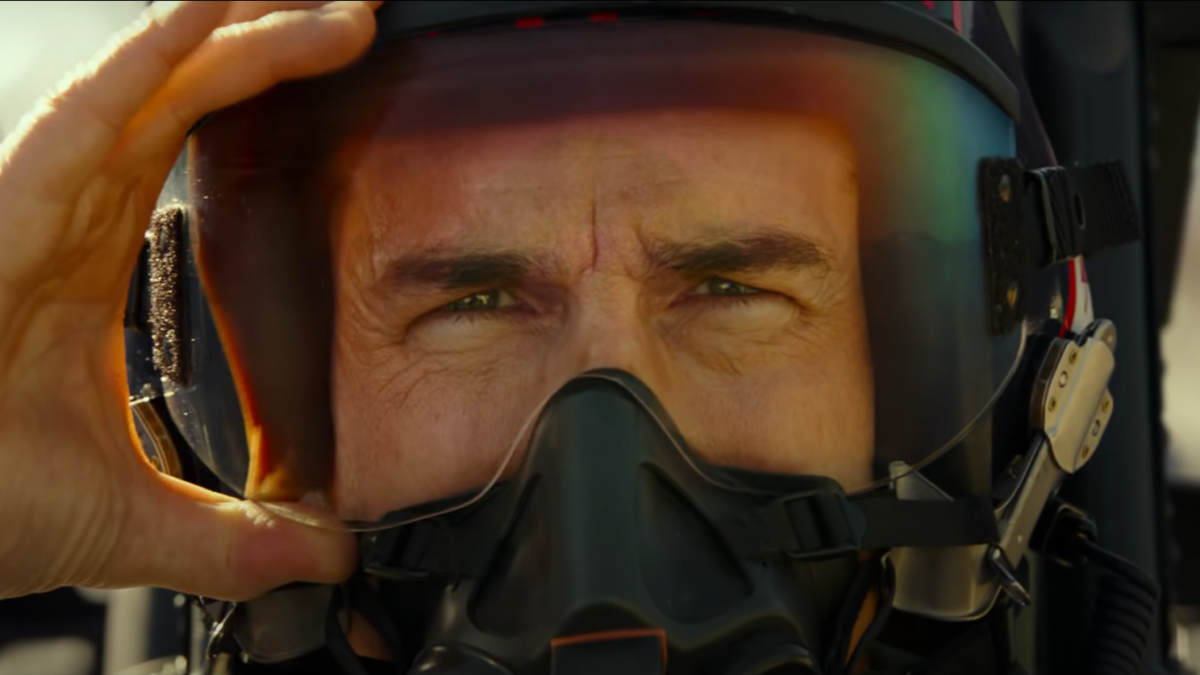There’s a lot of feel-good nostalgia in “Top Gun: Maverick,” which rocketed through box office records over Memorial Day weekend. Starting with an opening aircraft carrier montage set to “Danger Zone” that’s nearly identical to the original, and continuing via similar camera angles and dialogue in several iconic scenes, “Maverick” paid plenty of tribute to its classic 1986 predecessor.
The iconic bar hangout, the “Great Balls of Fire” singalong, that volleyball scene, the motorcycle, flying inverted, the tower buzz, breaking the hard deck, the admiral’s daughter (yep, did you catch that?), and a handful of other callbacks make an updated but loyal appearance. The costuming (including, of course, the sunglasses) pays homage to the ’80s original, as does the music. A few scenes recall “The Right Stuff,” another 1980s pilot classic. But to call “Maverick” a supersonically successful 131 minutes of 1980s nostalgia is to sell the film short.
“Maverick” doesn’t just inspire reminiscence of a world of Ray-Ban aviators, Kenny Loggins songs, F-14s, and bomber jackets, although it does that, both for those who lived it and those of us who learned to revere that world via the stories and movies of our parents. It inspires nostalgia for an America that’s all-too-rarely celebrated today.
The movie is unabashedly patriotic — so much so that a multibillion-dollar Chinese investor backed out of it. (That was undoubtedly a good thing for the movie; fans slammed the trailer for removing the Taiwanese and Japanese flags on Maverick’s jacket to appease Chinese censors, but in the final movie, both flags are back.)
Not only is the film free of Chinese Communist Party propaganda, it’s free of token left-wing social and political propaganda. The only agenda being pushed is that America is the best country in the world and the men and women who risk their lives to defend her are heroes worthy of our respect, and that’s an agenda I’m more than fine with (and a fitting one for Memorial Day weekend).
“Maverick” doesn’t just celebrate America via inspiring music, flags, sharp uniforms, and cool dogfighting scenes. It tells a pretty epic story of heroic people, with a plot that’s deeper and more profound than the original. It’s confident, not angsty. And it celebrates greatness in a way that our modern, victimizing, equity-obsessed culture has largely forgotten how to do.
Just like in the original, Capt. Pete “Maverick” Mitchell, played by Tom Cruise, is cocky and reckless enough to keep getting into trouble but just good enough to keep getting out of it. He’s not apologizing for his privilege or studying white rage or meekly following nonsensical mask mandates. He believes in being the best, which requires believing there is such a thing.
But unlike the cliche cocky characters that Hollywood regularly dishes out (and, just as regularly, mocks), Maverick makes you care about him. He’s matured since 1986, and understands that greatness isn’t just guts and balls but also heart — not heart in a Hallmark-movie sense, but in the sense C.S. Lewis meant when he talked about men who lack it.
Inseparable from greatness are duty, loyalty, bravery, integrity, and responsibility. “Top Gun: Maverick” celebrates them all, in a manner that’s rarely found outside of war epics like “Saving Private Ryan” or “Band of Brothers.”
The movie finds greatness in not leaving your wingman, in flying steel-nerved into certain danger against impossible odds, and in choosing to have your team’s back over the protestations of Pentagon bureaucrats. “Top Gun: Maverick” lets women be fighter pilots, but it doesn’t shy away from glorifying good old tough-guy masculinity.
It also glorifies the sacrifice of saying goodbye to loved ones when duty calls, and the fidelity of loyal friendships (Maverick’s former rival Iceman, played by Val Kilmer, appears in a touching tribute after Cruise reportedly refused to do the sequel without him). Chances are you leave the theater with at least a tinge of inspiration to seek greatness yourself.
To top it off, “Maverick’s” writers apparently understood that the best kind of greatness isn’t that of franchise superheroes or over-the-top special effects sequences. The movie employs some special effects, of course, but it doesn’t rely on them. The actors underwent training from the U.S. Navy so every shot in a cockpit is really in the air. There’s no glaze-your-eyes-over Marvel smorgasbord of CGI; the film could have been shot with the same technology available when the original was made, and it still would have been excellent.
That’s because, as awesome as the dogfighting scenes are, the movie doesn’t coast on them. It’s unapologetic in cheering for America, her heroes, and the greatness they pursue. It’s no wonder audiences love it. What’s telling is just how long it’s been since we’ve seen a film like it.









